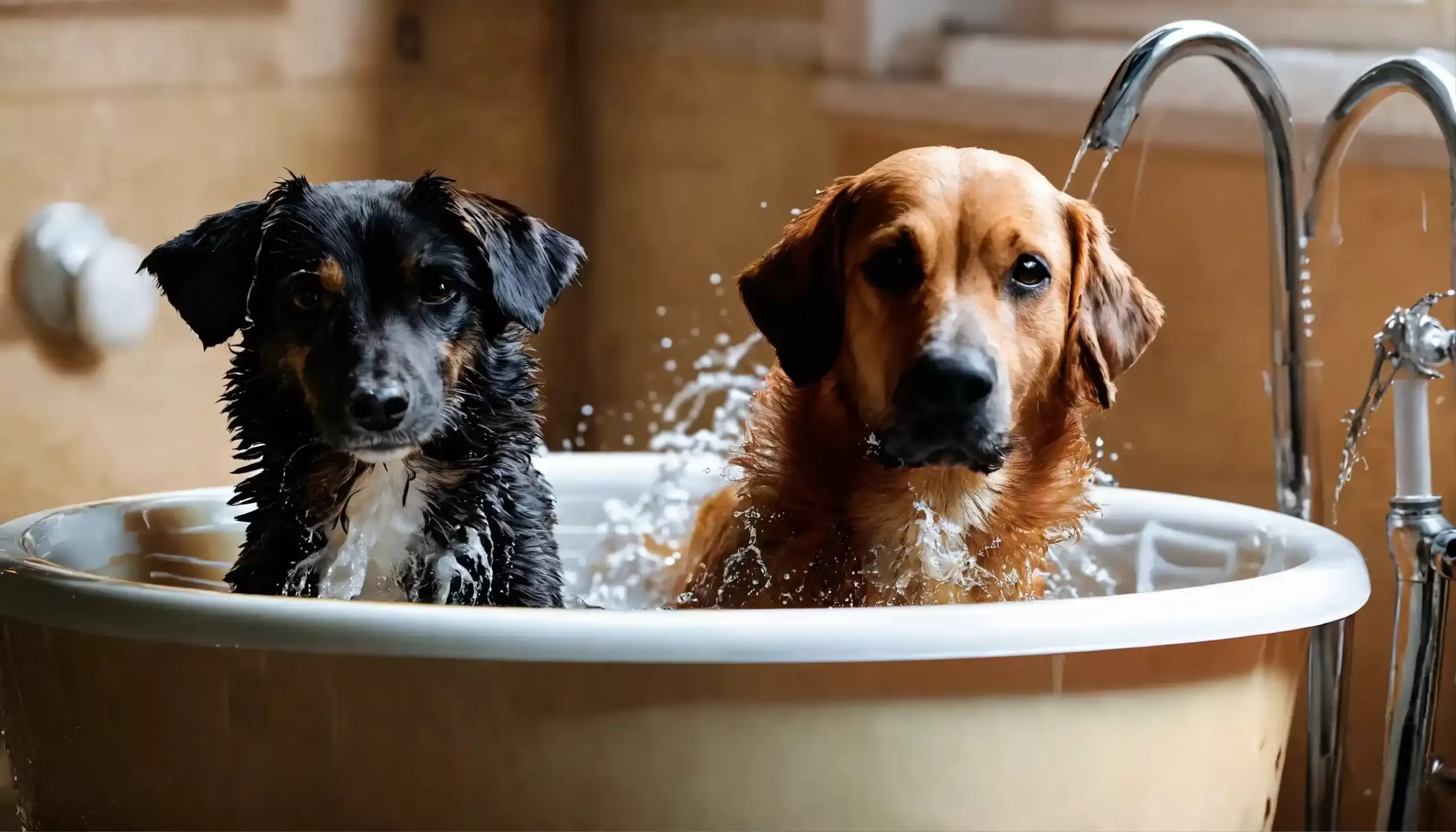Flea and tick prevention for dogs is a priority for anyone with a pet at home. After all, fleas and ticks are not just nuisances; they can also cause serious diseases in our dogs.
Fortunately, protecting your dog from these parasites doesn’t have to be complicated. With a few simple and consistent measures, you can keep your dog healthy and free from infestations all year round.
Want to know how? Keep reading to discover the best tips and strategies to ensure your dog stays protected against fleas and ticks!
Risks of Fleas and Ticks for Dogs

Fleas and ticks are common parasites that can significantly affect a dog’s health. In addition to causing discomfort, an infestation of these parasites can lead to serious health issues.
Tick-Borne Diseases
Ticks are known to transmit various diseases, including Lyme disease, ehrlichiosis, and babesiosis. These conditions can cause symptoms such as fever, lethargy, and joint pain, and in severe cases, they can be fatal. Therefore, it is crucial to consider flea and tick prevention for dogs as part of your pet’s care routine;
Anemia and Allergies
Fleas, on the other hand, can cause anemia in dogs, especially in puppies and elderly dogs, due to blood loss. Additionally, many dogs are allergic to flea bites, leading to intense itching, skin irritation, and secondary infections. Symptoms of flea allergy may include hair loss and inflamed areas on the skin;
Secondary Infections
The constant itching caused by fleas and ticks can lead to secondary infections, as the dog may scratch or bite the damaged skin. These infections can be painful and require veterinary treatment;
Impact on Behavior
The presence of fleas and ticks can affect a dog’s behavior. Infested dogs may become more irritable or anxious due to ongoing discomfort. This can lead to changes in eating and sleeping patterns.
Implementing a prevention routine, such as flea and tick prevention for dogs, not only keeps your dog healthy but also contributes to the health of the environment in which it lives, reducing the chance of infestation at home. With the right care, it is possible to keep your furry friend free from these parasites and the diseases they can cause.
How to Check Your Dog for Fleas and Ticks
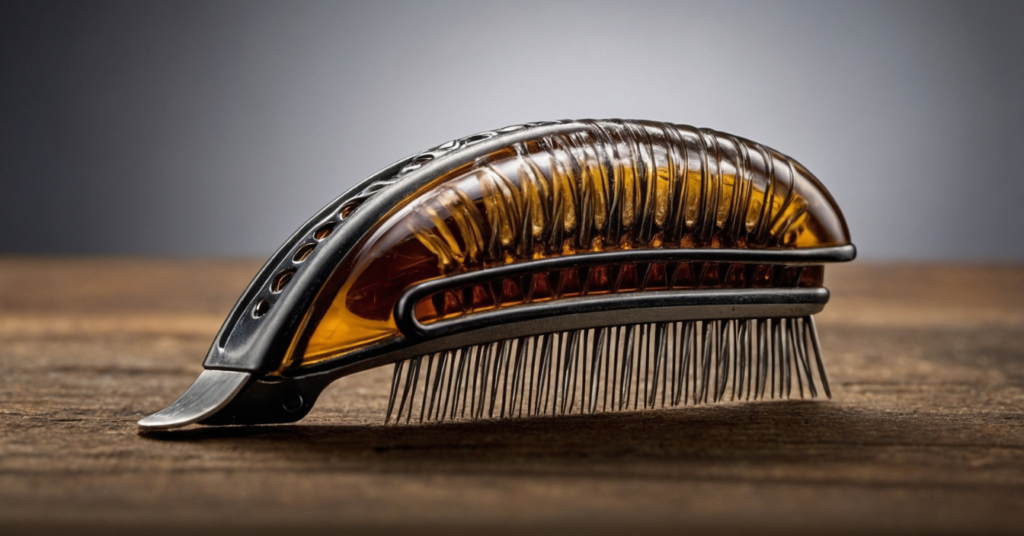
Regularly checking your dog for fleas and ticks is an essential part of maintaining their health and well-being. Here’s how you can effectively check for these pesky parasites as part of your flea and tick prevention for dogs strategy:
1. Coat Inspection
Start by carefully inspecting your dog’s coat, parting the fur to look for any signs of fleas or ticks. Pay close attention to areas such as the neck, ears, belly, and tail, as these are common spots for parasites to hide.
2. Visual Identification
Look for small, dark insects (fleas) or larger, arachnid-like creatures (ticks) attached to your dog’s skin. Fleas are quick-moving and may be harder to spot, while ticks tend to attach themselves more visibly. Identifying these pests promptly is crucial for effective flea and tick prevention for dogs.
3. Physical Sensation
Feel your dog’s body for any unusual bumps or lumps; sometimes ticks can be hidden under their fur. Sometimes ticks can be felt as small, hard bumps on the skin, especially after they have fed and become engorged with blood.
4. Use of Flea Comb
Gently use a fine-toothed comb designed for fleas to carefully comb through your dog’s fur, particularly in areas where fleas are known to hide. This can help to capture any fleas or flea dirt (black specks) that indicate a flea infestation.
5. Tick Removal
If you spot a tick glued to your pup, get a fine-tipped tweezers to grab the tick as near to his skin as you can and gently pull it straight out. Be sure to disinfect the bite area and dispose of the tick properly.
6. Consultation with a Veterinarian
If you suspect that your dog has fleas or ticks, or if you are unsure about how to effectively remove these parasites, consult with your veterinarian for professional guidance and treatment options.
Regularly checking your dog for fleas and ticks and taking prompt action if you find any can help to prevent infestations and reduce the risk of associated health issues.
Choosing the Right Flea and Tick Prevention Products

When it comes to selecting flea and tick prevention products for your dog, it’s essential to consider various factors to ensure the most effective and suitable option for your pet.
- Efficacy: Look for products that have been proven to effectively prevent and control fleas and ticks. This is crucial for successful flea and tick prevention for dogs;
- Ingredients: Consider the active ingredients in the products and choose those that are safe and suitable for your dog’s age, breed, and health condition;
- Application: Evaluate the ease of application, whether it’s a topical solution, collar, oral medication, or spray, to ensure convenience and compliance;
- Duration of Protection: Check the duration of effectiveness provided by the product to ensure long-lasting prevention;
- Additional Benefits: Some products offer additional benefits such as repelling mosquitoes or treating other parasites, so consider these features based on your dog’s specific needs;
- Veterinarian Recommendations: Consult with your veterinarian to get personalized recommendations based on your dog’s individual requirements and any existing health concerns.
By carefully considering these factors in your flea and tick prevention for dogs strategy, you can make an informed decision and choose the right products to keep your dog protected and healthy.
Natural Flea and Tick Prevention for Dogs
When it comes to protecting your dog from fleas and ticks, natural remedies can be effective alternatives to chemical-based products. These remedies not only help in controlling infestations but also minimize the risk of exposing your pet to harmful chemicals.
Essential Oils
Using essential oils such as lavender, peppermint, and cedarwood can act as natural repellents for fleas and ticks. These oils can be diluted and applied to your dog’s collar or bedding to help keep pests at bay.
Diatomaceous Earth
Diatomaceous earth is a natural powder that can be sprinkled around your home and yard to kill fleas and ticks upon contact. It works by dehydrating the pests, making it an effective and non-toxic solution for pest control.
Apple Cider Vinegar
Adding a small amount of apple cider vinegar to your dog’s water or applying it to their fur can help repel fleas and ticks, contributing to your flea and tick prevention for dogs efforts. The acidity of the vinegar makes the environment less hospitable for these pests.
Natural Flea and Tick Shampoos
There are natural shampoos available that contain ingredients such as neem oil, citrus extracts, and aloe vera, which can help in repelling and killing fleas and ticks while being gentle on your dog’s skin.
Dietary Supplements
Supplements like brewer’s yeast and garlic can be added to your dog’s diet to make their blood less appealing to fleas and ticks. However, it’s important to consult with a veterinarian before adding any supplements to your dog’s diet.
Flea Comb
Regularly combing your dog with a fine-toothed flea comb can help in physically removing fleas and ticks from their fur. This method, although simple, can be an effective way to control infestations.
Environmental Maintenance
Keeping your home and yard clean and well-maintained can significantly reduce the presence of fleas and ticks. Regular vacuuming, washing bedding, and maintaining outdoor areas can help in preventing infestations.
By incorporating these natural remedies into your dog’s care routine, you can effectively control fleas and ticks while minimizing the use of chemical-based products.
Treatment Options for Infested Pets: Quick Actions for Flea and Tick Prevention for Dogs
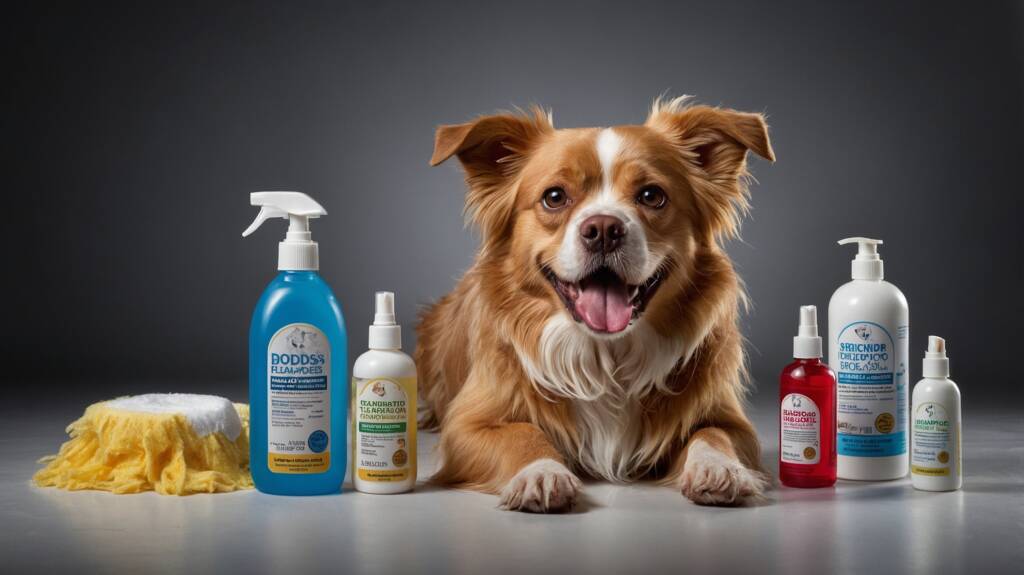
When your dog is infested with fleas and ticks, it’s crucial to take immediate action to alleviate their discomfort and eliminate the parasites. There are several treatment options available to address this issue.
1. Topical Treatments
- Spot-on Treatments: These are applied directly to your dog’s skin, usually between the shoulder blades. They provide long-lasting protection against fleas and ticks.
- Topical Sprays: These can be sprayed directly onto your dog’s coat to kill existing fleas and ticks and provide residual protection.
2. Oral Medications
- Chewable Tablets: These medications are taken orally and work throughout your dog’s body, killing fleas and ticks when they bite.
- Pills: These oral medications are effective in killing fleas and ticks within a few hours of administration.
3. Shampoos and Dips
Flea and tick shampoos: These are useful to bathe your dog, killing existing fleas and ticks on their coat. Dips are concentrated solutions that are diluted with water and applied to your dog’s coat with a sponge or poured over them.
4. Collars
Flea and tick collars: These collars are impregnated with chemicals that repel and kill fleas and ticks. They provide long-lasting protection and are convenient to use.
While these treatment options are essential, they work best when combined with regular flea and tick prevention for dogs. This comprehensive approach helps to keep your dog comfortable and free from infestations.
Environmental Control: Keeping Your Home Pest-Free
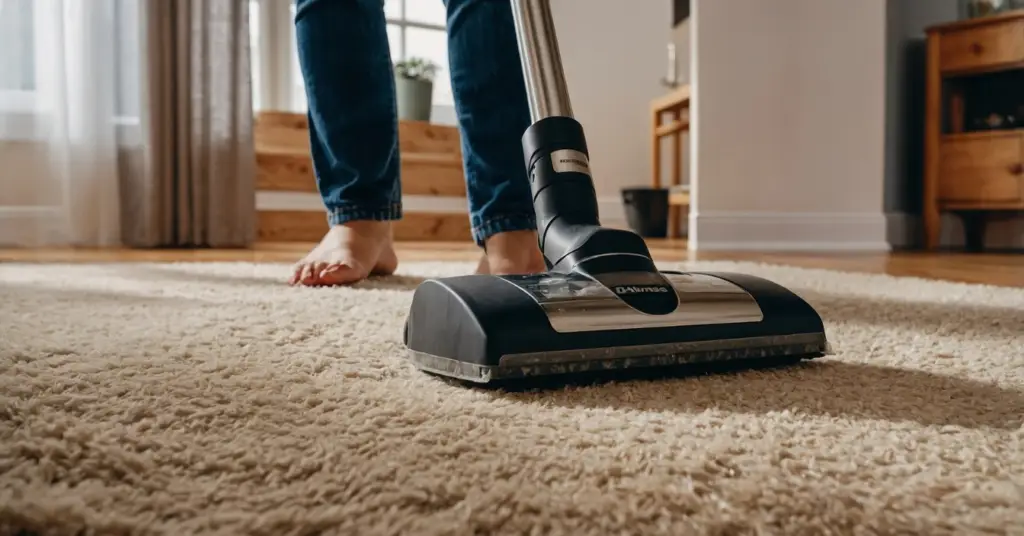
When it comes to keeping your home pest-free, environmental control plays a crucial role in preventing fleas and ticks from infesting your living space. By implementing the right strategies, you can create an inhospitable environment for these pesky parasites.
Identifying Problem Areas
Begin by identifying potential problem areas in your home where fleas and ticks may thrive. These include outdoor spaces frequented by your dog, as well as indoor areas where your pet spends time.
Regular Cleaning and Vacuuming
Regular cleaning and vacuuming are essential for controlling fleas and ticks in your home. Pay special attention to areas where your dog rests, as well as carpets, rugs, and upholstery. Dispose of the vacuum bag immediately to prevent re-infestation. Consistent efforts in flea and tick prevention for dogs start with a clean living space.
Outdoor Pest Control
Keep your outdoor areas well-maintained to minimize the presence of fleas and ticks. This includes regular mowing of the lawn, trimming vegetation, and removing debris where pests may hide.
Use of Pest Control Products
Consider using pet-safe pest control products in and around your home to create a barrier against fleas and ticks. These may include sprays, powders, and pet-safe yard treatments.
Wash Bedding and Linens
Regularly wash your dog’s bedding, as well as your own linens, to eliminate any potential flea or tick eggs. Use hot water and a pet-safe detergent to ensure thorough cleaning.
Professional Pest Control Services
In case there is a severe infestation, consider contacting a professional pest control service to address the issue effectively. These professionals can provide targeted solutions to eliminate fleas and ticks from your home.
By implementing these environmental control measures, along with proactive flea and tick prevention for dogs, you can significantly reduce the risk of fleas and ticks infesting your home, creating a safer and more comfortable environment for both you and your dog.
Preventing Fleas and Ticks on Walks and Outdoors
When taking your dog for walks or letting them explore the outdoors, it’s essential to take preventive measures to protect them from fleas and ticks. These pests can pose serious health risks to your dog and even to you and your family.
Precautions on Walks
- Avoid walking your dog in tall grass or dense wooded areas where fleas and ticks are more prevalent;
- Stick to well-maintained paths and trails to minimize exposure to these parasites;
- Consider using a flea and tick collar or harness for added protection during outdoor excursions.
Post-Walk Care
- Inspect your dog for fleas and ticks immediately after returning from outdoor activities;
- Use a fine-toothed comb to check for any signs of infestation, focusing on areas like the neck, ears, and tail;
- Remove any fleas or ticks promptly and dispose of them properly to prevent re-infestation.
By being proactive and taking preventive measures, including flea and tick prevention for dogs, you can help ensure that your dog stays safe and pest-free during outdoor adventures.
Year-Round Flea and Tick Management Strategies
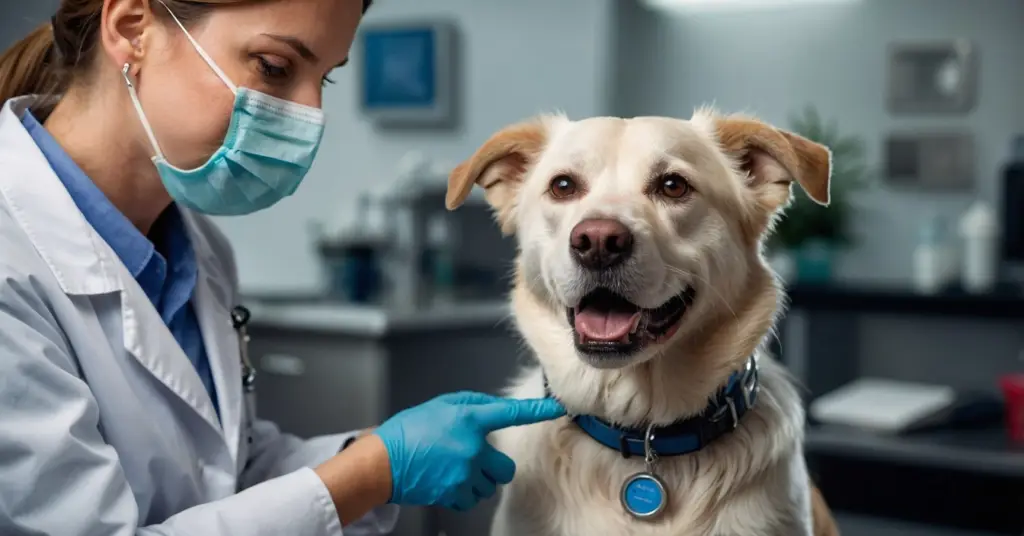
Year-round flea and tick management is crucial for keeping your dog safe and healthy. These parasites can pose a threat to your pet’s well-being and can also affect your family members. Implementing effective strategies for flea and tick prevention for dogs throughout the year is essential.
Regular Veterinary Check-ups
Regular visits to the veterinarian are essential for maintaining your dog’s health. During these check-ups, your vet can provide guidance on flea and tick prevention and recommend suitable products based on your dog’s specific needs.
Consistent Use of Preventive Products
Using vet-recommended flea and tick prevention products consistently is crucial for year-round management. These products can include spot-on treatments, oral medications, collars, and more. Ensure that you follow the instructions for application and reapplication diligently.
Environmental Management
Regularly clean and vacuum your home to eliminate flea eggs, larvae, and pupae. Washing your dog’s bedding and using pet-safe household flea sprays can also help in controlling the indoor environment. Additionally, maintaining a well-groomed yard and keeping outdoor areas tidy can reduce the risk of flea and tick infestations.
Professional Pest Control Services
If necessary contact professional pest control services to address severe infestations. These pest control experts can provide targeted treatments to eliminate fleas and ticks from your home and yard, reducing the risk of reinfestation.
Year-Round Vigilance
Stay vigilant throughout the year, especially during peak flea and tick seasons. Regularly check your dog for signs of infestation and promptly remove any ticks. Additionally, be aware of potential flea and tick habitats during outdoor activities and walks.
Education and Awareness
Stay informed about flea and tick control best practices and any new developments in prevention methods. Educating yourself about these parasites and their control can help you make informed decisions for your dog’s well-being.
By implementing these year-round flea and tick management strategies, including flea and tick prevention for dogs, you can help protect your dog from the risks associated with these parasites and create a safer environment for your entire family.

